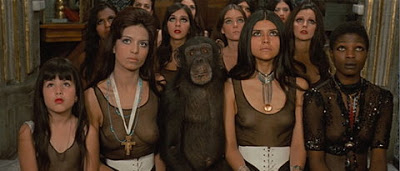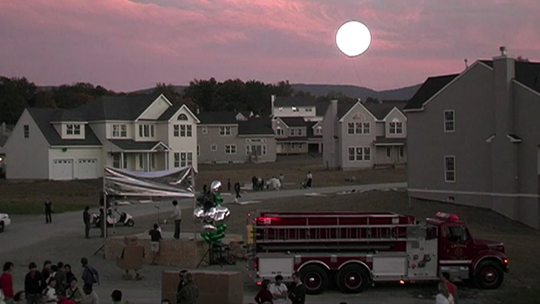photo by glen noble via unsplash
As the owner of this small press, former employee of a traditional publishing house, and current employee at one of the world’s top content creators, I think constantly about the economics of writing and publishing. I also often get asked the following questions in the following order:
1) Would you leave your current situation for a traditional publishing job?
2) Would you quit your day job to run your small press, El Balazo?
3) If you’re not trying to leverage El Balazo for a real publishing job or trying to build it into a full-time job for yourself, then why are you doing it, anyway?
Why I Don’t Work for a Traditional Publisher
I used to work for a traditional publisher (non-big five), and quit during the recession because I didn’t make enough money to pay off my student loans. I also tried to work for one of the big five, but couldn’t get an interview there when I was young-enough to consider an assistant job. Had I gotten hired when I was younger, I might be there still, working away. Now that I’m older and have had a bit of life experience, I’m glad things turned out the way they did.
It’s well known that traditional publishers almost exclusively sign new books written by celebrities or writers who have both built up a following and whose work will appeal to a mass market.
Editor friends of mine at traditional big five publishing houses have told me that the first question they ask when considering a manuscript is: what is the author’s platform? Do they have 10,000+ followers on Twitter? Does Google auto-suggest their name in the search field? In other words: can this author basically sell the book himself with the audience he has already built?
Editors at the big five aren’t snobs and don’t hate unknown authors. But, book publishing is a tough business. Even the biggest publishers are strapped for cash, and need to make solid bets on the books they believe sell lots and lots of copies. In the past, big five publishers would subsidize the publication of cool, indie stuff with money made from the hits. Not so much anymore. In this economy, it’s not the time to take risks on new authors or on content that falls outside of what is known to be marketable. The margins from hit book sales are a lot smaller, but the bills are just as high. Fewer and fewer cool, indie books get published by the big five.
For me, the point of reading is to discover risky, energetic content written in unconventional language or structure that is so particular to a unique person — a unique artist or thinker — that it’s uncomfortable and odd and moving and exciting. Working full time to acquire solid bets, such as a Rom Com actor’s ghost-written memoir, is not my cup of tea.
Why I Won’t Leave My Day Job
I run El Balazo in addition to holding down a demanding full-time job. Yes, this means we can publish much fewer books than we could if I dedicated myself full-time to El Balazo. Yes, it means I sometimes struggle to update the blog as often as I should. Yes, it means the snowball of growth is going to take quite a bit longer to grow big and fat as it rolls more slowly down the hill.
But because El Balazo doesn’t rely on income from benefactors, isn’t beholden to shareholders, and isn’t required for living expenses, it’s free. Free as a naked bum under a tennis skirt. El Balazo can publish and say whatever it wants. If no one’s floating you or relying on you, no one can require anything of you.
Why Am I Doing El Balazo, Anyway?
Here are the facts: I pay out of my own income to publish and market other people’s writing in my free time without expecting to make my money back. What the hell is wrong with me, right? Why do I do this weird thing?
I do this because I’m a writer and I fuggin love books. I think the world needs more good, weird books that have people fighting for them and producing them professionally. I believe there is still a community of people who care about great, weird books. And I want to find them as desperately as do many other writers.
I’m also frustrated that so much unique talent is passed over by major publishers. Because it’s lost in the slush pile. Because it’s quirky and therefore probably not marketable to a mass audience. Because, even though it might be marketable to a large-enough audience to make a nice profit, most writers don’t have the skills to create the platform publishers are looking for. Because they’re writers, not marketers. And they shouldn’t have to be.
I believe that thinking about how to market a book while writing that book dilutes a writer’s freedom to say what she needs to say. And, as you may have noticed, freedom to think and say what you want is El Balazo’s number one value.
I want El Balazo to be a place for writers who’ve not only had the cajones (or ovaries) to spend those lonely, long hours honing their writing skills, but the badassery to use those skills to say something unique — to create something new.
Why You Shouldn’t Publish With El Balazo
If you publish with El Balazo, I can’t guarantee you money. And, it’s okay with us if the marketable audience for your work is 100 people. It’s fantastic to entertain, inspire, and amuse an audience of 100 people. But, you can bet your butts that we ain’t giving over the rights to anyone in case your audience turns out to be wildly larger than that.
Although we are a new, small press open to creative content, we also won’t publish most of what gets sent to us. We at El Balazo are our own particular cat. Our taste is specific, it’s ours, and, we know it when we see it.
Why You Should Publish With El Balazo
Granted, we are only publishing our second book, and we have a lot to learn. But, we are committed to howling at the moon for new and creative writing that fits our tastes.
Because we aren’t tied to a building, to a paycheck, to a genre, or to a need to be marketable, we can and will take risks. We can and will take badass content out of its obscure corner, design it boss AF, and sell it to anyone who’s interested.
We also won’t tie you down. Go ahead. Use El Balazo to acquire some street cred, to help build that platform a larger publisher is looking for. Go ahead: be free. We wouldn’t want you to be anything less.
Interested in publishing with us? Send us your stuff!



























































